Introduction
Enhanced build and image stabilisation
Over a year on from unveiling the World’s first mirrorless hybrid camera to feature a full frame sensor, Sony remain the only manufacturer to have such an option on the market. In fact, whilst they wait for the competition to catch up, Sony has got around to launching a 2nd generation version of their original A7 model.
It’s fair to say the new Sony A7II is only a minor upgrade over its predecessor, but there are a few enhancements that make it more attractive to the professional photographer. These including improving the build quality by removing the plastic front panel to make the Sony A7II chassis all metal, reinforcing the lens mount to protect it from the strain of using heavy telephoto lenses and fitting weather sealing around the main controls to help keep out the elements. Handling has been improved too, thanks to a slightly larger handgrip and repositioning the shutter release button to a more ergonomically friendly location, all of which will be appreciated by photographers shooting over sustained periods.
The most notable boost to the A7II’s feature set however is a new 5-axis image stabilisation system, which Sony claim offers up to 4.5 stops of image stabilisation. That’s more than currently available on full frame DSLRs with Nikon’s or Canon’s lens based VR and IS systems, and has been made possible by Sony adopting a sensor shift mechanism. In a move away from their traditional lens based Optical Stabilisation System (OSS), the new stabilisation system on the A7II moves the sensor across 5 different axes to correct camera shake. This enables image stabilisation even using non-OSS lenses, but if you have a bunch of OSS FE mount glass however don’t panic, the two Sony stabilisation systems will work in tandem on the A7II.
Key Specifications
- 24.2Mp 23.9×35.8mm full frame CMOS sensor
- Sony FE lens mount
- 4.5 stops sensor shift image stabilisation
- Hybrid autofocus system with 117 phase detection points
- BIONZ X image processing engine
- XGA resolution 2.4m-dot EVF
- 3.0in tilting White Magic LCD screen
With an overall DxOMark Sensor Score of 90 points the new Sony A7II ranks in joint 11th place on the DxOMark database alongside the original A7 model also with 90 points. As they appear to use the same sensor, that’s no great surprise and the two models sit in joint 2nd place for mirrorless hybrid cameras, only losing out on top spot to the A7II‘s sister model the 36.4Mp A7R with 95 points.
Although not identical, the sub scores for Colour, Dynamic Range and ISO are predictably similar with both models offering great image quality. At base sensitivity of ISO 50 the Sony A7II boasts its best Colour Depth score of 24.9 bits, which ranks 13th overall on the database for colour. In the Landscape category the A7II’s score of 13.6 Evs ranks in 21st place overall and is half a stop down on its predecessor with 14.2 Evs. Finally for Low-Light Sports ISO the tables have turned slightly with the new A7II ranking in 16th place overall with a score of 2449 ISO, which represents a minor improvement over the original A7’s score.
Sony have really thought through their proposition with the A7 series and realising one camera can’t cater for the needs of all photographers offer three differing options. They’re all built around a similar sized full frame sensor but feature a range of resolutions, including the 12.2Mp A7S, 24.2Mp A7II and 36.4Mp A7R. On paper the higher resolution A7R is the clear winner for image quality with a DxOMark Sensor Score of 95 points that ranks it 3rd overall on the database. The A7R’s score of 95 represents a 1/3rd stop better image quality overall than 24.2Mp A7II with 90 points, and a ½ stop improvement over the 12.2Mp A7S with 87 points, but that doesn’t tell the whole story.
At base sensitivity of ISO 50 the best Colour Depth and Dynamic Range scores on the A7II and A7R offer notably better results than those from the lower resolution A7S’s 12Mp sensor. Achieving 25.6 bits for Colour Depth and 14.1 Evs for Dynamic Range the A7R offers a whole stop better image quality than the A7S in both categories. The new A7II sits between the A7S and A7R for Colour Depth and Dynamic Range offering a good compromise between resolution, Colour Depth and Dynamic Range.
With that lower 12.2Mp resolution spread out over the same physical size full frame sensor however the Sony A7S boasts a much better pixel pitch than its two sister models. That means the A7S really comes into its own at higher ISO sensitivities and with a staggering ISO range of 50 – 409,600 the A7S offers 4 stops more sensitivity than the A7R, which maxes out at ISO 25,600 and 3 stops more than the A7II with its top ISO of 51,200. Take a look at the charts for Dynamic Range and Colour Depth below and you can see that whilst the A7R is ahead at the lower ISOs, if you’re regularly shooting at sensitivities of ISO 800 or above and don’t need the higher resolution sensors of the A7II or A7R then the A7S is the clear winner.
With no updates or announcements on its full frame SLT cameras for a couple of years Sony has clearly opted to develop the A7 series as its ‘affordable’ full frame option. With body only prices of $1,700 for the Sony A7II compared to $1,500 for Nikon’s D610 or $1,800 for Canon’s EOS 6D how does Sony’s hybrid option compare against the enthusiast full frame competition? In terms of DxOMark Sensor Scores, Nikon’s D610 leads the way with 94 points, ranking it in 6th place for all sensors on the database and around a 1/3rd stop improvement over the A7II overall.
If it’s a landscape camera you’re after at the lower ISO sensitivities the D610 offers almost a whole stop better Dynamic Range up to around ISO 400, where the gap narrows with the A7II. The opposite is true for Colour Sensitivity however where the A7II and D610 offer comparable results up to ISO 1600 and it’s only at the higher ISO sensitivities the D610 has the edge. With roughly the same amount of pixels on the same size sensor there’s very little between them in the Sports low-light ISO category. A little further down the rankings in 33rd place overall the Canon EOS 6D’s score of 82 points equates to ½ a stop better image quality overall from the Sony A7II. Again there’s not much in it for the Low-Light ISO score and, in a similar pattern to the D610’s Dynamic Range results, whilst the A7II clearly excels at lower ISOs the opposite is true from ISO 800 or above.
Improvements to build quality and handling alongside the addition of a new sensor shift image stabilisation system make the new Sony A7II an even more appealing prospect to both serious amateur and professional photographers. Packing essentially the same 24.2Mp full frame sensor there’s no discernable improvement in image quality over its predecessor the Sony A7, but it still remains one of the best scoring sensors on our database ranking in 11th place overall. With alternative 12.2Mp and 36.4Mp variants available in the A7 range the A7II plots a steady course between its two counterparts and offers a good balance between resolution and image quality. If it’s the very best image quality you desire for studio or landscape work and can cope with the limitations of shooting at the lowest ISO sensitivities the 36.4Mp Sony A7R offers better results for both Colour and Dynamic Range. If however you’re after a hybrid that excels in low light the lower resolution 12.2Mp Sony A7S with its greater pixel pitch and maximum sensitivity of ISO 409,600 is the one to go for. We will have to wait and see if the other manufacturers release an alternative full frame hybrid camera to rival Sony’s A7 series in 2015, but for now it remains a unique proposition in the market.


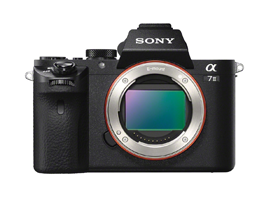


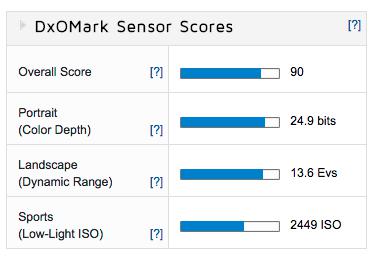
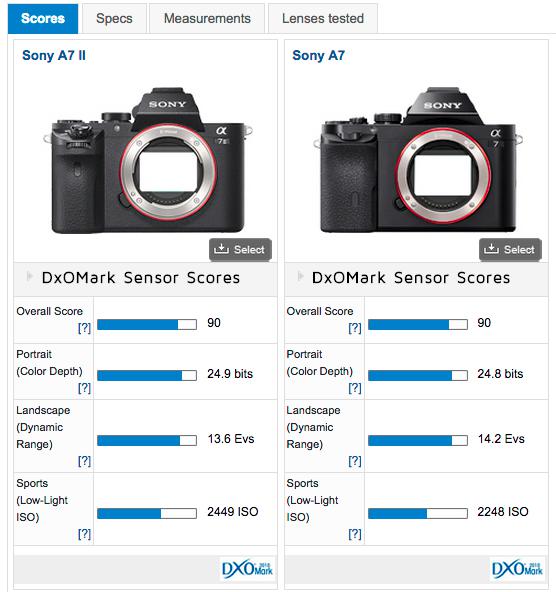
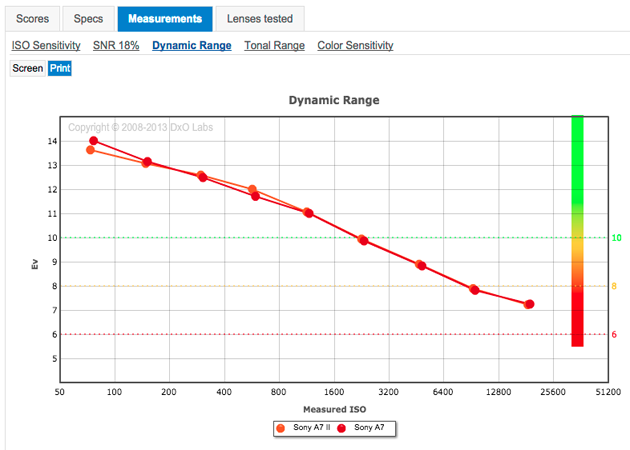
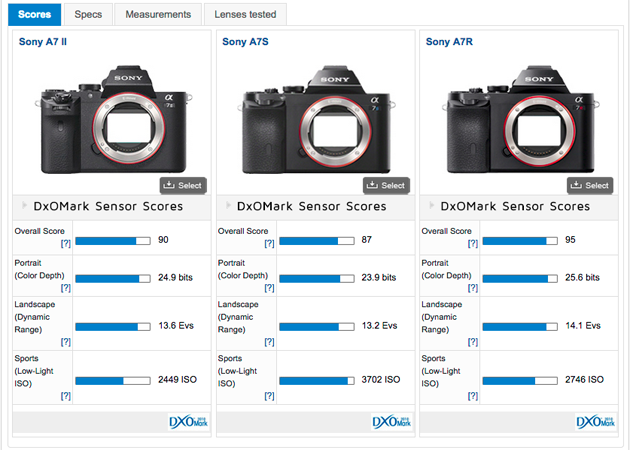
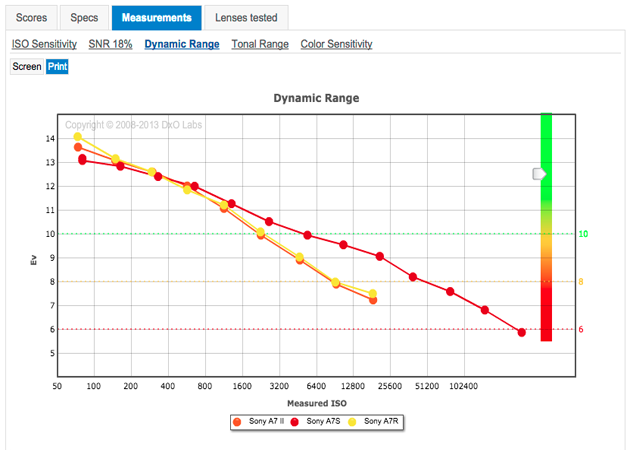
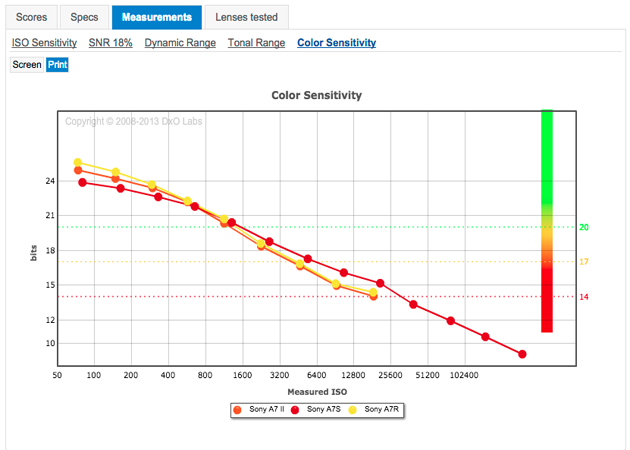
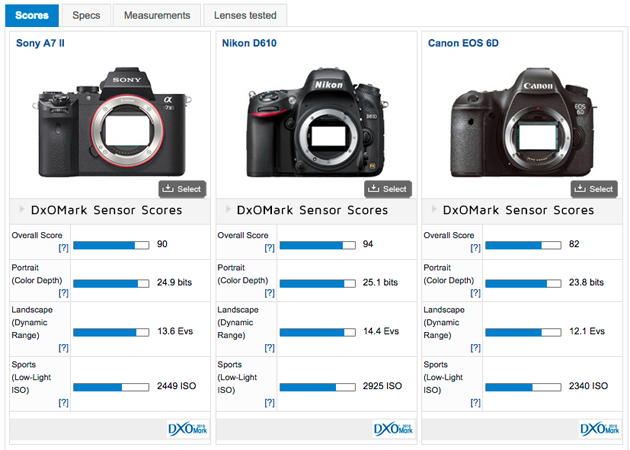
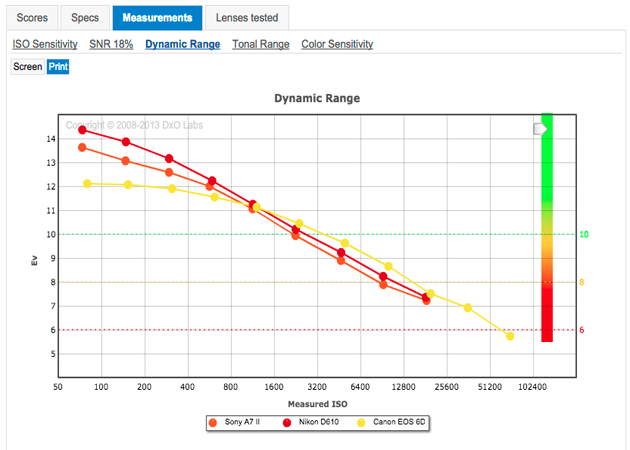
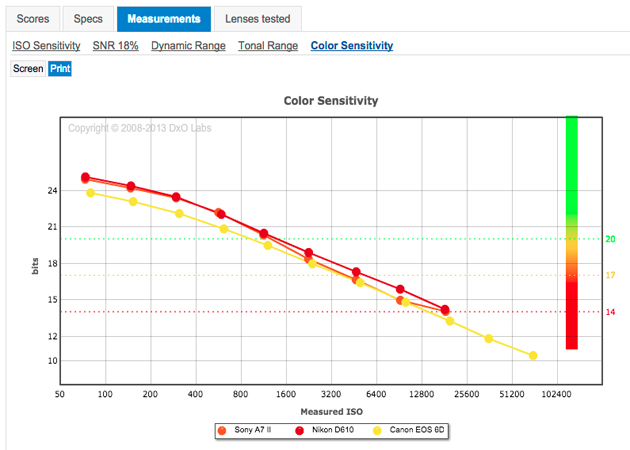
DXOMARK encourages its readers to share comments on the articles. To read or post comments, Disqus cookies are required. Change your Cookies Preferences and read more about our Comment Policy.